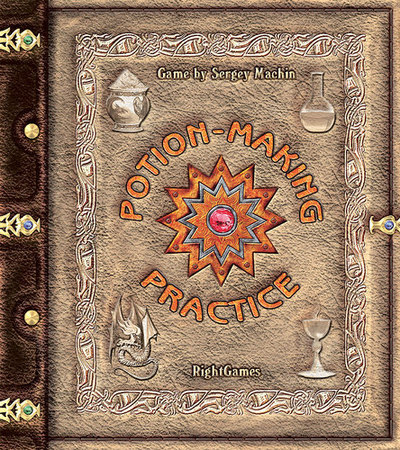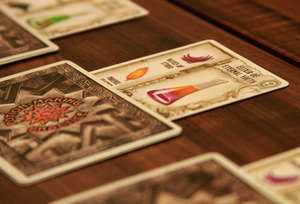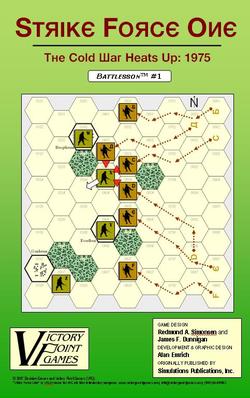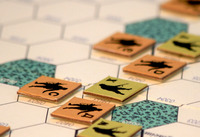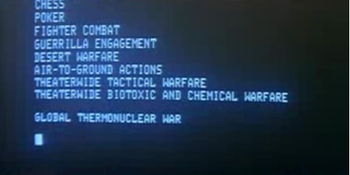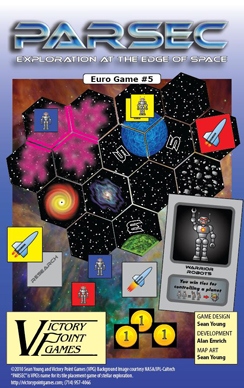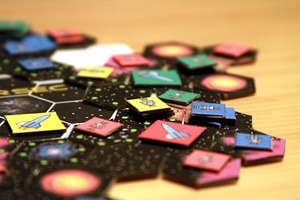Sentinels of the Multiverse: Rook City - How to Kick More Ass in 10 Easy Questions!
 Tuesday, November 22, 2011 at 11:13AM
Tuesday, November 22, 2011 at 11:13AM 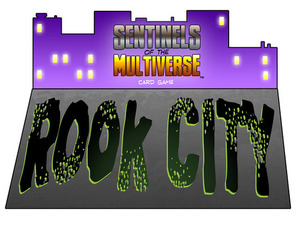
Last August, I had the exciting opportunity to play and review Greater Than Game's first published card game: Sentinels of the Multiverse, a non-collectible, cooperative card game based in a vibrant comic book universe. Sentinels of the Multiverse is fun, has awesome pacing, and really captures the feel of the superhero genre.
Now, hot on the heels of the Sentinels release, Greater Than Games is offering the next installment in the Sentinels' story: Sentinels of the Multiverse: Rook City. Rook City comes packaged with new villains, new heroes, and new locations themed around the gritty, urban, Rook City.
As Rook City is entering the last week of its Kickstarter Campaign, Design Director Christopher Badell agreed to an interview with www.nerdbloggers.com about his project - and dispatches our crafty questions with true superhuman skill.
What is Rook City? What secrets are hiding under its urban exterior? And what happens when we play a game of "What If"? Stay tuned for the answers to these, and more exiting questions, starting NOW!
Nerdbloggers: First of all, can you tell me a little about yourself, and your background? I'm always interested to learn about the people who make the games we play.
Christopher Badell: Christopher was born on a dark and stormy night in a dingy hospital in Venezuela . . . oh, that's probably not the sort of information you're looking for. Well, I have a pretty lengthy background in all the things that led to this game working. I'm a writer with a history of teaching and tutoring, a game player with a love for cooperative games (obviously), a teacher and storyteller (which is why a strong narrative is so important to Sentinels of the Multiverse), and a fan of comic books. Now, to be fair, our primary comic guru is Adam Rebottaro, the artist of Sentinels of the Multiverse. He knows more about comic books than anyone I've ever met, and his knowledge of and love for the medium really led right into this being possible. Greater Than Games, LLC, is just the three of us, Adam, Paul, and myself, and we're all well suited to making this happen. I mean, this would never have been a company at all if it wasn't for Paul's business smarts and ability to make things happen. I'm lucky to be working with such talented people.
Nerdbloggers: I reviewed Sentinels of the Multiverse during it's initial release, and I was really impressed by the detail and care put into the characters, environment, and gameplay. Sentinels was very successful at portraying unique characters that each played very differently, and it also delivered a roller coaster ride of interaction between the heroes and the villains. With Sentinels' first expansion, Rook City, how is Greater Than Games planning on enhancing this cinema-like experience?
Christopher Badell: A big part of the way Rook City fits in with the world of Sentinels of the Multiverse is the theme. Every expansion we have planned has a very specific theme, so we're not just adding more characters and challenges to the game; we're expanding the “Multiverse” experience, as well. Rook City's gritty, urban theme shows up in all of the characters and settings, and really sets a definite feel to new games.
The two new Heroes, Mr. Fixer and Expatriette, have some exciting new mechanics and card interactions, and there's a lot to discover there, both in terms of how their decks work and how they interact with other heroes.
The villains are just awful. They don't have the vast “world domination” plans that the villains from Sentinels of the Multiverse do, but they are very powerful and have terrible goals. Also, they bring lots of new villain mechanics and flip abilities to the table, so each of the four new villains is an entirely new game.
Nerdbloggers: I noticed in the original games, there were villains who had a hero nemeses that was not included with the base game. In Rook City, are we going to meet some of these heroes?
Christopher Badell: Absolutely! We've been keeping that information secret, but I'll go ahead and lay it all out now. Citizen Dawn's nemesis is in this set – it's her daughter, in fact! Expatriette! Several clever fans already picked up on that, so it's good to finally officially reveal that. Additionally, the Rook City villain The Matriarch is the nemesis of Tachyon, and Spite is The Wraith's nemesis. The Chairman and Mr. Fixer are nemeses, so that just leaves Plague Rat from Rook City and Omnitron from the Sentinels of the Multiverse Core game. Their nemeses will certainly be in a future expansion. In fact, we have many exciting plans for both of them!
Nerdbloggers: Can you divulge some details about the backstory, and abilities of the new cards, and do you have any personal favorites?
Christopher Badell: Hmmm, there is a lot that we still have yet to release, so I don't want to say too much. However, I will say there is a ton of background information on the updates to the Rook City Kickstarter here: http://www.kickstarter.com/projects/1787899968/sentinels-of-the-multiverse-rook-city-expansion/posts
Also, in terms of new card abilities, look forward to being able to deal irreducible damage, and for certain villain cards which cannot be destroyed, changing game play permanently when they are played. Also, there is one villain in particular who can play through their entire villain deck in just a few rounds. It's terrifying.
As for favorites? That's tough. It's like trying to pick a favorite child! So, don't tell the others, but Spite's deck is probably my favorite of the new villains. Shhh!
Nerdbloggers: In my review of Sentinels of the Multiverse, I had erroneously mentioned that the different environments and villains didn't appear to share a common "universe". Since the release of Sentinels, I've come to understand that there is actually a very rich backstory behind Sentinels of the Multiverse. Would you mind giving a general overview of the sentinels universe, and how rook city fits into the bigger story?
Christopher Badell: Yikes! That's a tall order! Well, The primary hero team that drives the Sentinels of the Multiverse story is the Freedom Five, made up of Legacy, Bunker, Tachyon, The Wraith, and Absolute Zero. They fight crime! Baron Blade and Legacy have been nemesis forever, really, as Baron Blade's father and Legacy's father (who was also Legacy!) were nemesis back around World War II. So Baron Blade is the primary Freedom Five villain. However, Citizen Dawn's “Citizens of the Sun” cause a lot of problems for the heroes as well. So much that they have to occasionally recruit help from outside the Freedom Five, which is where you start seeing appearances of other heroes like Ra, Fanatic, and Haka. Tempest first shows up as a precursor to Grand Warlord Voss's troops assaulting the planet, and it's only with Tempest's help that the Freedom Five are able to save the world from Voss's alien hordes. Baron Blade constantly shows up, regardless of how many times he is “defeated”, and his big story arc, called “Moonfall”, is where he attempts to pull the Moon into the Earth using his TerraLunar Impulsion Beam. Right after that story arc is Citizen Dawn's big push to take over the world, and that arc is named “Sunrise”. See what I did there? At some point in all this, Omnitron gains sentience and decides to stomp all the humans, and The Visionary shows up from her future to attempt to stop the current timeline from becoming the world she lived through in her book “New Memories”. And that's just a brief look at the stories of these characters! Whew!
As for Rook City, it's the hometown of The Wraith, so much of her solo crime fighting takes place there. Unfortunately, crime seems to just attract more crime, and sometimes the villains in Rook City become a large enough problem that The Wraith calls in her teammates, or possibly other heroes she's met in her adventures. As mentioned before, the villains in Rook City aren't trying to take over the world, but their plans are no less terrible, and they must be stopped!
Nerdbloggers: The basic rules for Sentinels were very simple, with the interesting game interactions delivered through the text on the cards themselves. Will Rook City see any changes to the basic rules?
Christopher Badell: Nope! The basic rules will stay the same, because that's the core of Sentinels of the Multiverse! As a player, you play a card, use a power, and draw a card. On the villain turns and the environment turns, you put the top card of the appropriate deck into play. Follow all instructions. However! Rook City does introduce some new interactions, and all of the villains have unique flip abilities, so there is still plenty of new stuff to keep the game interesting.
Nerdbloggers: Greater Than Games self funded Sentinels of the Multiverse, but Rook City is being offered as a Kickstarter project. Now that you have gone down both routes, what benefits does Kickstarter give you as a developer, and a publisher.
Christopher Badell: The most useful part about Kickstarter for us was finding out what sort of demand there was for a Sentinels of the Multiverse expansion. And with the fast and overwhelming response we had, we know – there is absolutely a demand. So, that was probably the best part. People are excited that we've raised so much money, and we are as well, but the thing to keep in mind is that the vast majority of that money is presales of the expansion, so while Kickstarter does give us the ability to offset the costs of printing the game due to those presales, Rook City will need to be strong enough to continue making sales in order to keep generating revenue for future expansions and other games we're also working on.
We have had such a great response from the gaming community with the Rook City Kickstarter that it is likely we will use Kickstarter again in the future to fund the printing of future projects.
Nerdbloggers: Rook City has already met it's funding goals, so it's definitely being published, but there are some pretty interesting stretch goals that have been announced (and some intriguing teases for some that haven't been). Could you tell us a bit about the rewards for these goals?
Christopher Badell: At the time of this interview, we are VERY CLOSE to the $25k reward level, which will send every backer some exciting Rook City art prints. We love art prints, because it gives us a chance to showcase Adam's fantastic art in a size larger than a couple inches on a card. We already broke the 20k level, which was the big one for most fans, as it means we'll be sending out HP and Damage-Modifier Tracking Cards to all our backers. That was a big deal for us, because it was asked for by the Sentinels community, and we love having the opportunity to make something that people want. Moving forward, there are three big levels left: 30k, 40k, and 50k. The 30k levels is possible, but I'm not holding my breath. We've already come so far, and we've certainly seen a decline in pledges since hitting 20k. However, at the 30k level, we print up some awesome Rook City t-shirts and send those to all the backers who are getting the game. At the 40k level, we have an awesome alternate version of Baron Blade, though it looks like we probably won't hit that level. But we still have exciting plans for him!
Nerdbloggers: Okay, Last Question! The Wraith and Legacy get into a fight. Who would win?
Christopher Badell: Ooh, that's tough. First off, which Legacy? I'm assuming standard Legacy, not his daughter (or his father!) so we have to get past the point of him being unwilling to attack The Wraith, due to their camaraderie and that she's a fellow hero. Hmmm, so, Legacy believes, due to a mind-affecting beam deployed by Baron Blade, that The Wraith is in fact an imposter who has taken her place! He fights with all of his power to defeat her, knowing that only in defeating this vile doppelganger can he save his friend, The Wraith, from her imprisonment! The Wraith has been affected by the same mind-beam and believe that killing this false-Legacy before her will save the world! Their fight goes for hours, Legacy flying through stone walls in his hunt for the evil Wraith, while she uses all her skills and gadget to not only evade him, but set up a devious trap for her super-powered foe. However! Just as Legacy tears through a steel plated floor to find The Wraith, moments before she is able to spring the trap, which would drop Legacy into a vat of flesh dissolving nerve-agent, Tachyon appears between the two heroes holding some odd device. In half the blink of an eye, Tachyon dons dark sunglasses and quips, “Deal with it” as the device she carries emits a blinding flash. Both Legacy and The Wraith are stunned momentarily, then realize their error! This was Baron Blade's dastardly plan the entire time! Resolved, the three heroes turn their attentions to the now fleeing mad scientist, once again united to defeat evil and stand for justice!
Nerdbloggers: Thanks so much for taking the time out to answer our questions!
Christopher Badell: Thanks for asking them! Keep on saving the Multiverse!
Check out the Sentinels of the Multiverse: Rook City Kickstarter page to support Greater Than Games, and pick up a copy of Rook City for yourself. If you haven't already picked up the base game, there are plenty of great packages in the Kickstarter page that include both the base game and the expansion, and an awful lot of really cool kickstarter rewards.

